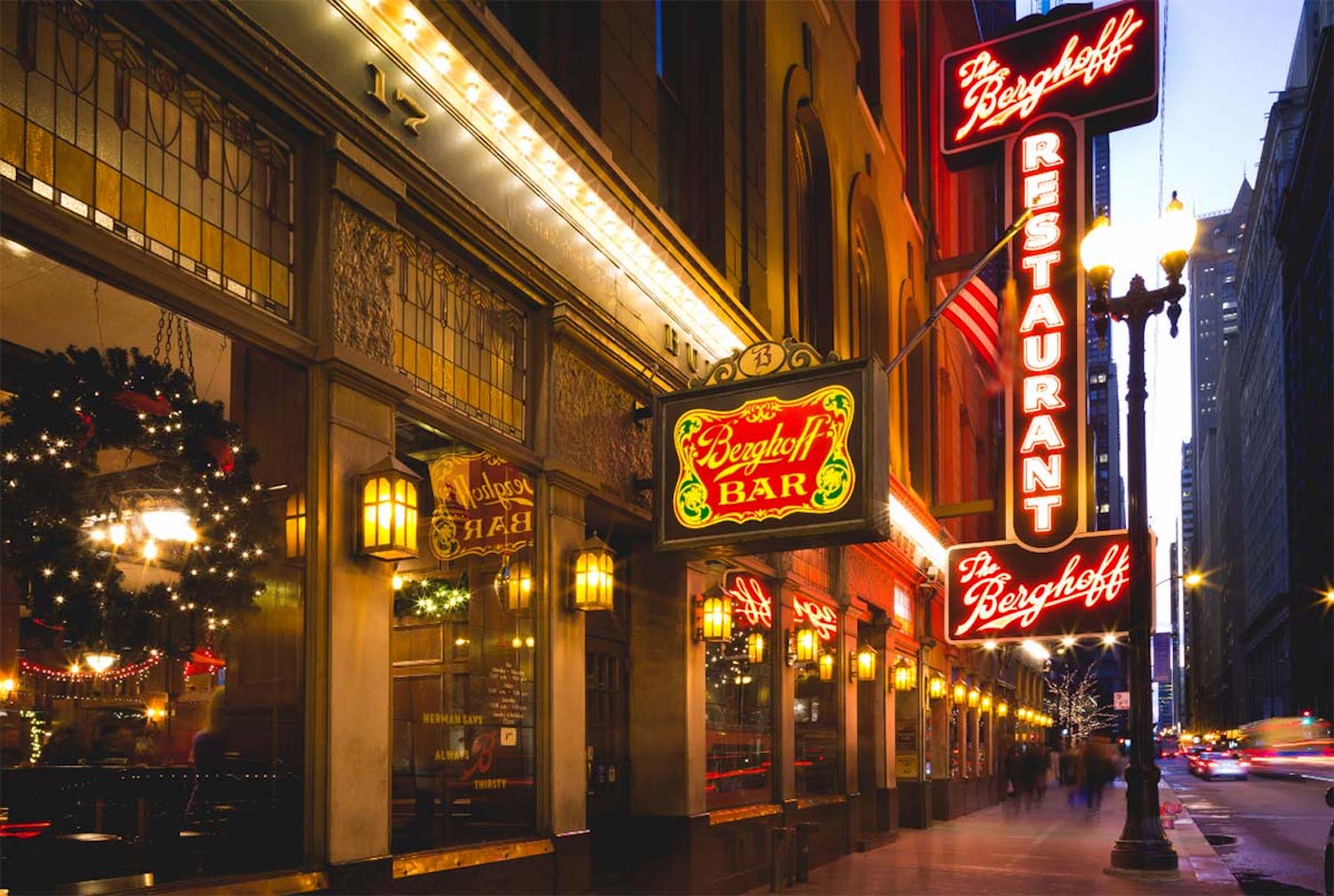Chicago is America’s best bar town, but it used to be even better. Once, there were 2,000 bars in the city, but that number has fallen to less than 1,000. It’s our duty to patronize these watering holes while we’re in the Windy City, and it’s our privilege to drink in establishments that have been operating for more than 100 years. Here are Chicago’s best historic bars in which to begin your booze-centric pilgrimage.
The Berghoff, Loop
Very few bars and restaurants make you feel small in a good way. The Berghoff does this. It feels like it’s been around before you — it most certainly has because it opened in 1898 — and will be around long after. It’s one of the only downtown establishments you’d be happy to patronize with a lifelong Chicagoan and a tourist. Go for lunch, get a Reuben and a Bergoff lager, and eat a meal your great-grandparents could have enjoyed. If they did enjoy that meal, it was provided by the great-grandparents of the folks who run the place today — it’s been family-owned and operated for its entire existence.
Carol’s Pub, Uptown
You don’t expect a country and western bar in Uptown, but Carol’s is the last of an all-but-dead breed — the neighborhood was once a country music hotspot. Home to a generation of Appalachians who traveled north, Chicago was country music’s capitol decades before Nashville. The current version is not the Carol’s that catered to a country crowd and broke 20-somethings (pitchers used to be $5) from 1972 to 2016. It’s cleaner now, and since re-opening in late 2018, it has hosted events from WBEZ and surprise shows from Wilco. I miss the old Carol’s.
The 11 Best Bars in Chicago, According to Bartenders
Where Chicago’s best go when they want someone else to call the shotsGreen Mill, Uptown
You do expect fantastic jazz clubs throughout Chicago and you do expect stories of mobsters and Prohibition. You get both at Green Mill. You also get cutting edge arts programming, with regular shows like Paper Machete. I’m going for the jazz and spoken word performances, out-of-towners are going for the Al Capone legends (legends, not facts, because Al Capone probably did drink there but probably did not utilize any trapdoors to underground tunnels to escape capture). Whatever your reason for visiting, you’ll be pleased with the outcome.
If you like jazz bars with solid sound history that also feature adventurous programming like Green Mill, visit The Hungry Brain in Roscoe Village and The Hideout in the industrial strip no-man’s land between Wicker Park and Lincoln Park.
Rainbo Club, Wicker Park
A certain breed of writers like to think of themselves as the product of Nelson Algren’s Chicago. Luckily, you can still drink at a few of the watering holes Algren frequented, some of the most affordable spots in Wicker Park. Rainbo Club may be more renowned for its place in the 1990s alt rock explosion (Liz Phair’s Exile in Guyville cover was taken in the Rainbo photo booth), but for the aspiring writers, it’s still a place where the A Walk on the Wide Side author drank. If you’re indifferent to ’90s rock and mid-century American literature, the place has been around since 1935, and that alone sets it apart from most of its neighbors.
If you’re already going to Wicker Park, hit up Gold Star Bar just two blocks east on Division. It’s another spot Algren frequented, also nearly 100 years old (it opened in 1933 or 1934, based on conflicting reports) and also has a really great neon sign.
Shinnick’s Pub, Bridgeport
This place has been around since the 1880s, and the family that currently runs the bar, the Shinnicks, took over in 1938. So they’re in the fourth-generation of Shinnick operations here. Originally opened in preparation for the 1893 Columbian Exposition (celebrating the anniversary of Columbus’s arrival, not the nation of Colombia), maybe it’ll still be around whenever the doomed Devil in the White City movie or a TV show based around the 1893 Columbian Exposition finally comes together.
Join America's Fastest Growing Spirits Newsletter THE SPILL. Unlock all the reviews, recipes and revelry — and get 15% off award-winning La Tierra de Acre Mezcal.
